
All of our forms are open source
The following are open source documents. Please join us in an exchange of ideas and resources on eco-art pedagogy. Feel free to adapt these ideas and send us yours.
FALL 2018
{ Syllabus | Projects Overview | Salish Wonder Room | Eco-Actions | Bibliography }
FALL 2020
{ Syllabus | Projects Overview | Sensory Suitcase | Habitats in Sound | Bibliography }
Introduction
In the realm of ecologically-oriented art, there is a growing field of strategies, with artists and artist networks, curators, books and exhibitions, university majors and degree programs. Within this broad effort, eco-artists work across disciplines and within communities to:

- Focus attention on the web of interrelationships in our environment — to the physical, biological, cultural, political and historical aspects of ecological systems;
- Create artworks that employ natural materials, or engage with environmental forces such as wind, water, or sunlight;
- Reclaim, restore, and remediate damaged environments;
- Inform the public about ecological dynamics and the environmental problems we face;
- Re-envision ecological relationships, creatively proposing new possibilities for co-existence, sustainability, and healing.
Eco-artists assert our entanglement in a more-than-human world. They introduce ecologically relevant timeframes, longer than a human life span, longer than generations. Their work exposes empty-world assumptions, that there is “always another forest to cut, a grassland to plow, a fishery to trawl, always an upstream, an upwind, a place that is away” (Thomas Princen). Ultimately, they extend the creative problem- solving of contemporary art practice to the larger societal concern of sustainability.
Course Description
The objective of the course is to develop knowledge, skills and critical thinking for eco-art practice. Students conduct interdisciplinary research, field work, and community engagement in order to facilitate eco-art projects. As the range of eco-art practices are diverse, from the production of physical objects to performance, environmental intervention and social practice, the course provides hands-on experience in an array of creative strategies.
Student Learning Outcomes
Through this course you will:
- widen your imaginative and aesthetic capacities to respond to field study, scientific research, and indigenous practices in your contemporary art practice;
- acquire wide-ranging interdisciplinary knowledge about a nonhuman organism of the Salish Sea region and its habitat through self-directed research;
- develop skills with multidisciplinary practices of installation, collaboration, field work, and social practice through hands-on projects;
- gain familiarity with a wide range of international artists addressing ecology, especially issues of biodiversity, threats to biodiversity, and climate change, learning about the strategies and critical concepts they employ.
Projects
Commonplace Book: Use journaling/sketchbook for awareness, observation, knowledge, critical thinking. Research a Salish Sea organism and habitat. Transcribe readings. Make notes, drafts, sketches for projects.
Positionality Bios: Locate yourself in place-based research, investigating how social and political context affect ecological relations.
Chalktalk: Deepen your understanding of contemporary place-based art. Explore possibilities for addressing place, ecology, history, power structures, social relations through interdisciplinary art practice. Adapt artwork as a basis for community interaction.
Sensory Suitcase 1 (3D object): Deepen your understanding of contemporary place-based art. Gain skills and experience developing a portable 3d eco-art piece. Adapt artwork as a basis for community interaction.
Sensory Suitcase 2 (Habitat Sound installation, interpretive materials): Experiment with observation and field recording as tools for eco-art practice. Make a multidisciplinary and experiential art installation through collaborative process.
Eco-Action: Investigate the potential of eco-art practice for social transformation. Gain hands-on experience with eco-art social practice and video documentation.

“I keep the ancestors in mind as I begin my journey . . . I am in land, waters that are not my own, and I ask for the guidance to follow this project with respect and honor. I understand that even if we’re in different lands my ancestors are always with me and that they can communicate with those here to create harmony and solidarity. We come in peace to understand that water is life, and that our connection to the earth is deeper than we have been made to believe. La tierra es sagrada y mágica, aquí o allá, donde sea que sea lo mismo. Que esta experiencia me dé nueva sabiduría y me dé curación y conocimiento ancestral . . . { The land is sacred and magic, here or there, wherever it is the same. May this experience give me new wisdom and give me healing and ancestral knowledge . . . } ♥”
Art & Ecology Student Samara Almonte, Fall 2018

This website is made possible by the support of WWU’s Sustainability, Equity, & Justice Fund.
Art & Ecology course developed by Professor Cynthia Camlin.
Website designed by Mouse Bird Studios & edited by Emma Parkinson. © 2020

